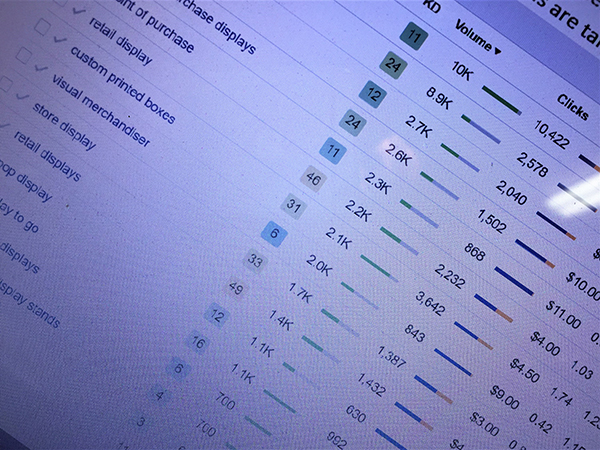
Keyword research is something that is core to SEO and Content Development. There are a lot of tools that can help find good keywords for you- AHREFS, SEMRush and Wordstream are prominent paid tools; then there’s Google’s Keyword Tool, Keyword.io, Ubersuggest… and we sometimes check them all because they almost always produce different results.
Then, you have to filter through those keywords based on how they fit with your market, how much traffic they generate, and if it matters, how much the average click cost is for pay-per-click.
But, depending on your market, some subjects don’t produce much data or traffic in the tools, especially for B2B site owners. What to do?
Building keyword volume
Our experience is that for many industries or markets the subject matter is too narrow to develop much traffic in these tools that are used to dealing with traffic volume in the millions. Don’t fret. This is your opportunity to create content using keywords that can “congeal” traffic.
I almost always start with competitive research. As you read articles on the subject matter, look for any recurring keyword ideas you didn't have in your own article. You may not agree with them, but the point is they got traffic, so consider them! Roll those into your keyword search to see what suggestions your tool may have. By doing the research and combining related low-volume key terms in a compelling web page or article, you can combine interest from smaller audiences and pick up momentum. It’s not quite the “skyscraper” technique bloggers like Brian Dean at Backlinko (one of our favorite resources) refer to, but shorter and wider. Let’s call it the “mall” technique.
You will likely make use of a number of keyword variants, as well. B2b clients that serve niche markets make use of this strategy. Frankly it can be tough to remain compelling on some of these subjects, so you have to connect keywords in a way simply to get enough interest in a page to get it to rank.
Promote your content
Because you are trying to gain traction on low-volume words, you may have to promote them more across social media, blogs, and PR. If there are other industry blogs or review pages that might be interested, do your best to try to get some inbound links to your new page from them.
Just make sure that in the article or web page you use good titles and subheads, and then in subsequent blog posts, you can go deep on singular terms to create more overall traffic for that page or article, and link back to the first one. Google’s smart enough to bring traffic in to a well-structured page with subject “chunks”, just make sure they’re not too far apart. It works!